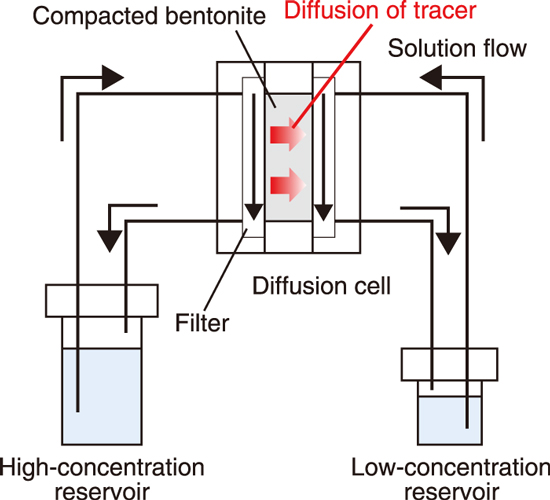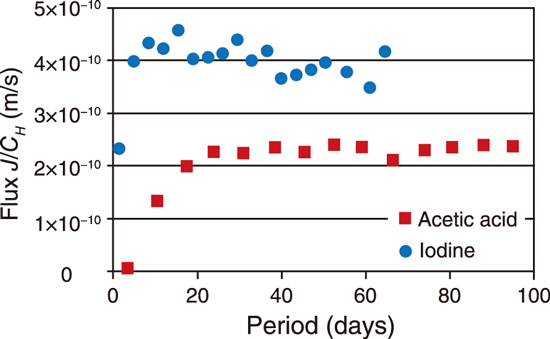
Fig.8-26 Schematic view of diffusion experiment

Fig.8-27 Results of diffusion experiments
Table 8-2 Effective diffusion coefficients (De) and formation factors (FF) measured by the diffusion experiments

Carbon-14 (14C) is one of the radionuclides present in radioactive waste in the form of activated metal waste. In the geological disposal of radioactive waste, the radionuclides released from the waste are retarded in the compacted bentonite used as the buffer material. However, the retention of 14C in compacted bentonite is hardly expected because of the weak sorption of 14C on bentonite. Therefore, 14C is one of the key radionuclides in the safety assessment of geological disposal. A part of the 14C in the activated metals is released as low-molecular-weight organic compounds. In this study, the diffusion behavior of carboxylic acids (acetic acid and butyric acid) and alcohol (butanol) in compacted bentonite was investigated via diffusion experiments. The diffusion behavior was compared with that of iodine and deuterated water, which has been widely reported.
The changes in fluxes with time measured by the diffusion experiment (Fig.8-26) are shown in Fig.8-27. The fluxes increased with time and reached a steady state. The effective diffusion coefficient (De) was calculated from the flux at the steady state based on Fick’s first law. The formation factor (FF), which indicates the diffusion path properties such as tortuosity, was calculated by dividing De by the self-diffusion coefficient of the tracer in water. From Table 8-2, the FF values of acetic acid and butyric acid are in good agreement with those of iodine, which diffuses as an anion similar to acetic acid and butyric acid. In contrast, the FF values of butanol were different from those of deuterated water, though both tracers diffuse as electrically neutral species. (Note that the FF values obtained from the same number sample were compared (Table 8-2) as the FF values vary depending on the condition of the compacted bentonite sample even if the samples are prepared under identical conditions.). These results indicate that the diffusion path of carboxylic acid was similar to that of iodine, while the diffusion property of butanol differed from that of deuterated water. Thus, the difference in De values between carboxylic acid and iodine originates from the difference between their self-diffusion coefficients. The De values of carboxylic acids can be calculated from those of iodides by using their self-diffusion coefficients.
In the safety assessment for geological disposal, the De values of radionuclides in compacted bentonite should be evaluated with high reliability. Nevertheless, few studies reported the De values of carboxylic acids. The results of this study indicate that the widely reported De values of iodine can be utilized for setting the De for 14C in the form of carboxylic acids. This knowledge will contribute to increasing the confidence in setting the De for 14C.
This study was performed as a part of “Project on Research and Development of Spent Fuel Direct Disposal as an Alternative Disposal Option (2015-2017FY)” supported by METI (Grant number JPJ007597).
(Takamitsu Ishidera)
<Previous: 8-10 | Next: 9 Computational Science and E-Systems Research>